What is The Best Content Structure for a Blog Post?

Writing blog content is both an art and a science. There's a ton of research that goes into it, a ton of psychology behind the things you say and the way you present them, and an endlessly deep rabbit hole if you want to fall into it. And at the same time, your audience isn't a perfectly rational actor, a spherical and perfect representation of your ideal customer. So, writing blog posts is just as much about the vibes.
For my part, I like to use a basic kind of structure for my blog content. I have a handful of mental templates for different kinds of presentations (like the list post, the tutorial, or the more narratively-focused think piece), but the overarching structure for them all is fairly similar. You can think of it like a burger or a sandwich.
When you're making a sandwich, you get two slices of bread and a bunch of ingredients and assemble it. How does that reflect on a piece of content?
The Top Slice
When you build a sandwich in real life, you start from the bottom up since you have to pay attention to things like gravity. That's not the case for writing blog content, so we start from the top down.
The "top slice" or top bun of the sandwich is all of the stuff above the fold and down to the first major section of the post. It includes:
- The H1 blog post title.
- The introductory paragraph or section.
- A 30-second summary or BLUF.
- A table of contents.
Some people view the bread on a sandwich as little more than a bit of filler and structural support to carry the actual ingredients. Other people – the gourmets – recognize that the bread itself is a key part of the sandwich and that different breads have different tastes, textures, and abilities to augment (or take away from) a sandwich. In other words, the bread is critically important and often overlooked.
The top slice is where three important things live: your hook, your user experience, and a big chunk of your SEO.
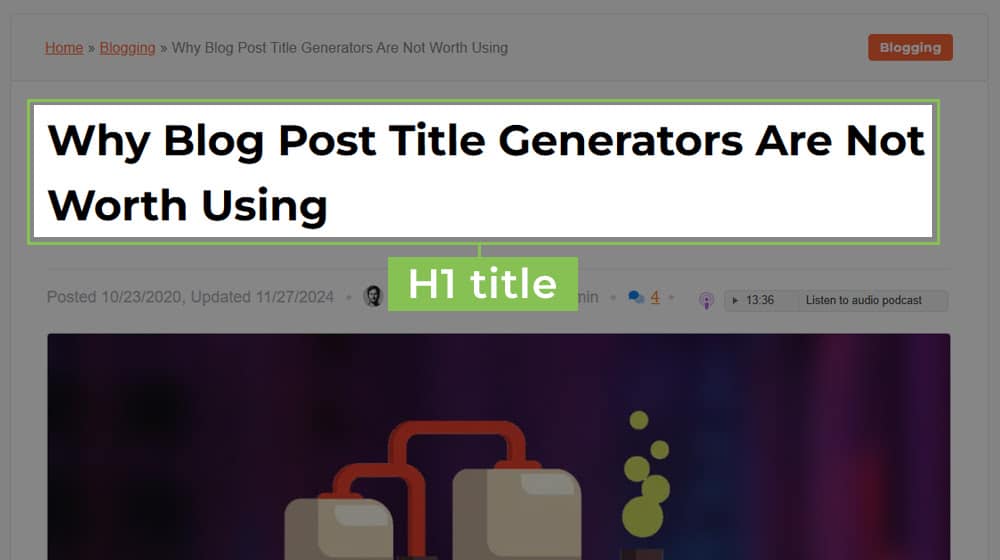
Your H1 title is always going to be an essential part of your blog posts, of course. While you can do testing with different titles and audiences, it's always going to be a critical part of how your post appears in search, how it embeds in social media and chat apps, and how people see it when they land on your page. Writing a good title is hard, too, which is why there are blog post title generators (that I recommend avoiding). Instead, give a serious read to some guides on writing good titles.
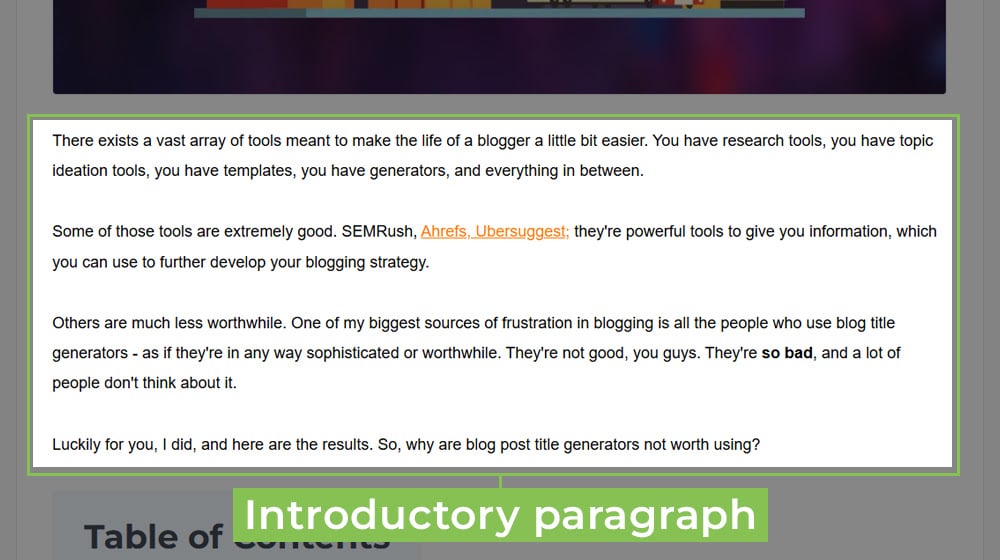
Your introductory paragraph is where you draw in your readers with some hook. It doesn't need to be reflective of your page's meta description (though Google may replace your meta info with content from your page if they feel like it matches user queries better), but remember that a lot of people are only going to read the top bit of your post initially. You need to hook them with that introduction, whether it's with a clever metaphor, a compelling question, or just an up-front statement of what they'll get if they read on. Otherwise, they'll likely bounce.

Your 30-second summary is a brief paragraph set aside to summarize the key points of the blog post. In a sense, it harkens back to grade-school essay formatting, of the "tell them what you're going to tell them" introduction. It's also known as BLUF or Bottom Line Up Front. For my part, I've found it useful to use AI to write up a super-quick summary, while the rest of my content is hand-crafted. You can see an example at the top of this post and every other post on my blog.
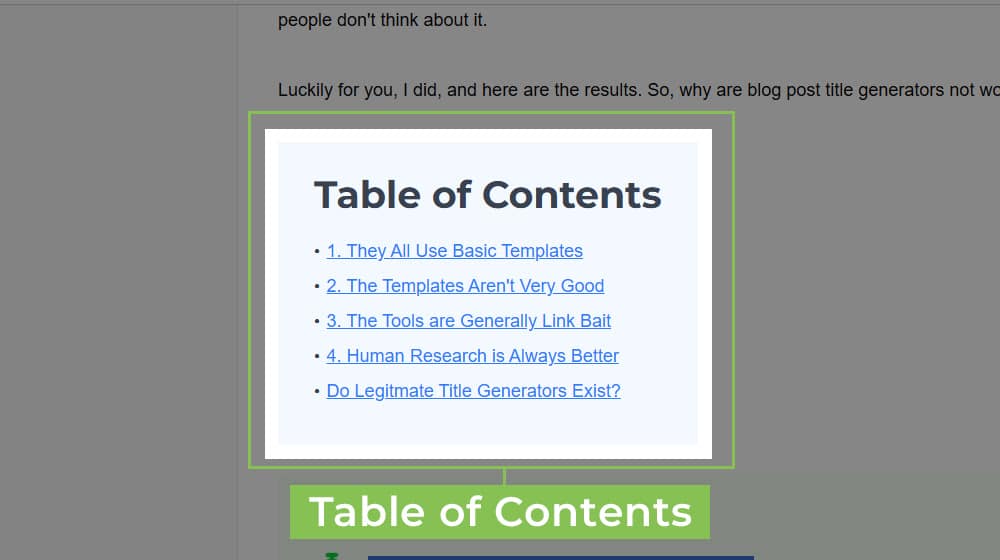
Your table of contents, which can be auto-generated based on subheadings, is part of your user experience and navigation. It helps your users find the specific piece of information they want to find on your page, so they don't have to waste time scroll-skimming.
Pro tip: Assign analytics events to page internal links in the table of contents. That way, users who click on it record a second event in your analytics, which is a great way to distinguish between single-page viewers and bounces. You can also do similar things for other blog types, like food blogs using a "jump to recipe" button.
The nice part about all of this is that half of your top bun is all the stuff you can auto-generate with plugins and tools. That way, you can spend more time shining up the couple of parts you need to generate yourself before moving on to the meat of the post.
The Meat of the Post
The meat of the post is all of the salient details and information you include. It's the information you gather from case studies, the quotes you solicit from experts, and the opinions and data you offer to back them up.
The meat of the post can vary, just like the meat on a sandwich. Sometimes you want bacon, sometimes you want roast beef, sometimes you want turkey, right? My apologies to any vegetarians harmed in the creation of this metaphor.
So, consider different kinds of meat to be different kinds of posts.
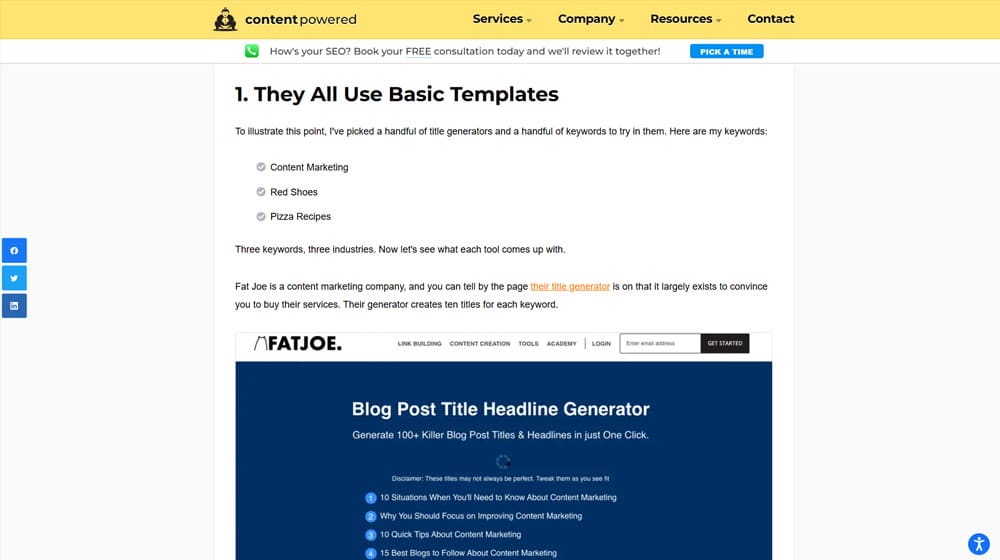
In a listicle or list-style post, the meat is layer after layer of short, information-focused entries of a list. If you write a post listing the top 20 tools to achieve a task, each layer is the name of a tool and a blurb about what it does that sets it apart from the rest. You don't need a ton; this is thin-sliced meat built up in layers.
In a tutorial post, the meat is the step-by-step instructions you provide to accomplish a task. Each layer is unique and builds upon the previous layer. There also may not be as many layers, though it depends on the complexity of the task you're describing and the length of the process.
The one major attribute the meat shares in any blog post is that it's where you seed in keywords and other critical details. Since it's the bulk of the post, it's where the information your users are searching for can be found.
When creating the bulk of your blog posts, you also need to be aware of things like the user intent behind a query that you're targeting. Otherwise, you'll be putting the wrong meat on the wrong kind of sandwich.
The Veg and Condiments of the Post
A sandwich is about more than just the meat and the bread. You need seasonings, condiments, and veg! Sure, sometimes you just have a simple LTO (Lettuce, Tomato, Onion), and that's it, but other times you have cheese, mustard, and mayo, even spices to accentuate the flavors of the meal.
In the blogging world, all of the assorted stuff that goes into a blog post besides the content can be considered in this category.
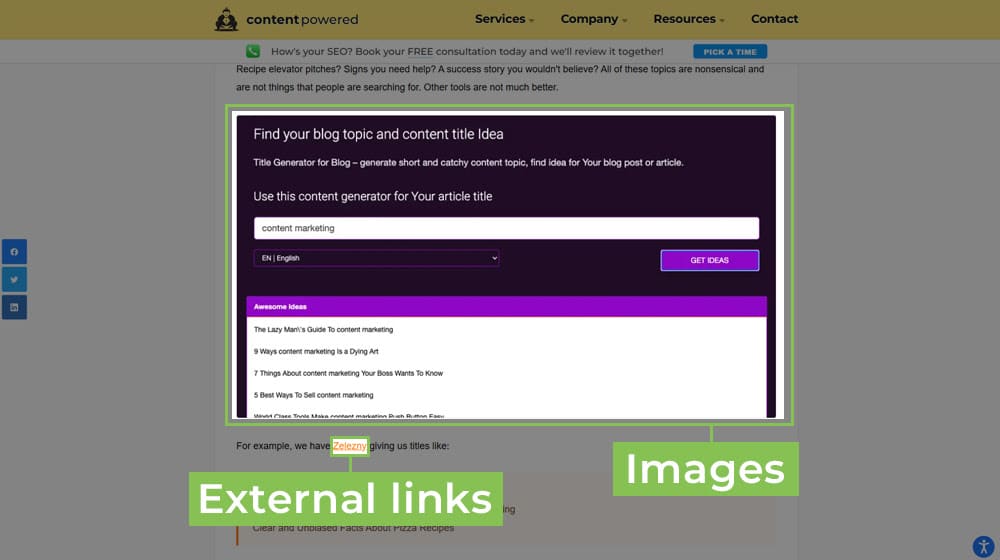
There's a lot, including:
- Internal links.
- External links and citations.
- Embedded media.
- Images for your post.
- Formatting throughout the post.
- Special tips and asides.
Even little things like section-based summaries can constitute these additions to a basic post.
All of these should be included to make the best "sandwich" you can make, but you need to know how to use them right. Embedded media would be like a slice of cheese, where you don't want too much of it, or it will overpower the rest of the sandwich. Images are like veg, which can sit between each layer of meat to add to the sum total of the sandwich. Formatting and things like lists and asides are like a sprinkle of dill or a finishing salt, something to spice up the content.
Of course, different sandwiches have different requirements. If you're making a PB&J, you aren't going to need onions or mustard. If you're making a Monte Cristo, you have entirely different considerations. But, just like with cooking, you have to get the basics down before you can take on more exotic kinds of content.
The Bottom Slice
The bottom bun for your content is physically at the bottom of your content. As you might expect, there's not a whole lot to it, but there are some things to consider that might not be as intuitive.
First up, you have the conclusion and wrap-up. You don't need the full sort of 30-second summary like you put at the top, but you still need a conclusion; otherwise, people will feel like you're cutting off out of nowhere. Every blog post should have a point, after all, and your conclusion helps to drive it home.
This is also where a call to action should go. Most blogs will have various calls to action throughout, injected with plugins or added with pop-overs, or even as the occasional internal link, but including a wrap-up call to action is a great idea. Personally, I like to use a simple call to comment for a lot of my posts. I have my product-focused and service-focused CTAs mid-content, but the bottom bun CTA is usually something like "What do you think of this topic? Leave a comment below!" That's because it ties into another element of the bottom slice.
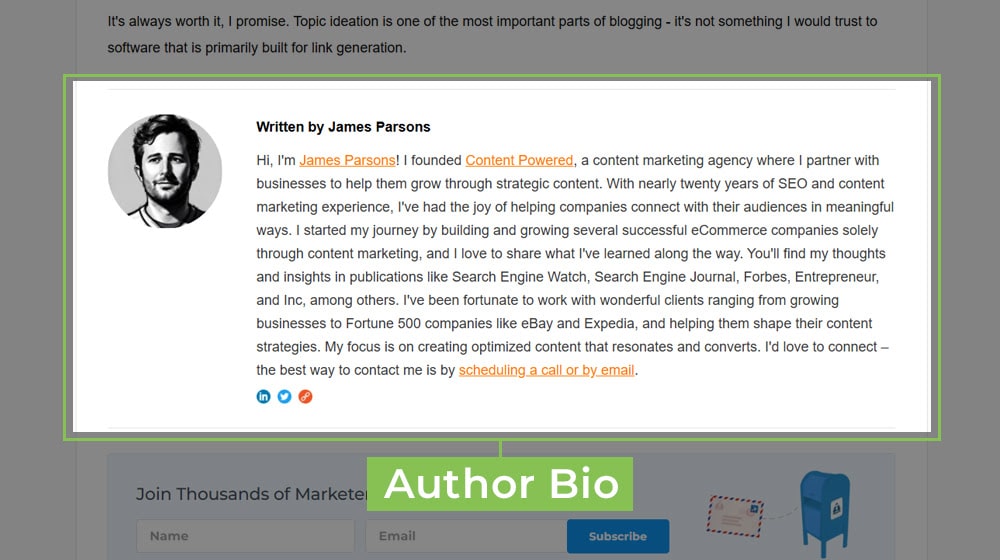
Another important part of your bottom bun is your author bio. These days, one of the most important elements for a blogger is building up a reputation. That's always been somewhat true in terms of reputation management and building a personal brand, but Google has pushed it to another level with E-E-A-T metrics. People want to know who is writing their content, and they want to know if they can trust you. By putting your name and a bit about who you are on the content, you build that trust.
Finally, you have your blog comments. Not every blog post will do well enough to get blog comments, but when you do get them, you need to foster them through responses. Usually, the same person won't be coming back to see a response, but other people – and Google – can, so it can be very valuable. It also ties into that CTA I mentioned above. Some people disable blog comments, but I advise against it unless you have a good reason to do so.
Different Kinds of Sandwiches in Blogging
To wrap things up, I want to touch on a couple of other considerations.
First and foremost is the overall environment and context for your content. Think of it like picking what kind of sandwich you're assembling. Are you making a heavy, hearty burger? A lighter and fast BLT? A hot sandwich with melty cheese and a dip? A huge sub made to cater for a party?
In blogging terms, this is a consideration for the overall role content plays. It ties into the user intent I already mentioned, but it also ties into your site's overall structure. A heartier sandwich might be a pillar post, for example.
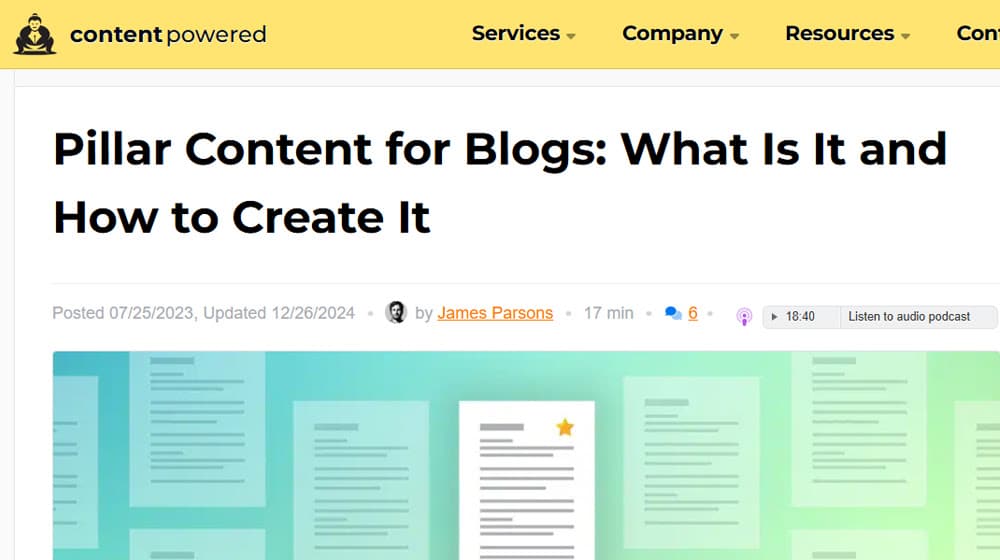
You always need to think about the reason you're creating a piece of content and how it fits in with the other content you're publishing. Sometimes, you need deep dives. Sometimes, you need more theoretical and conceptual content. Sometimes, you're just providing a tangible resource or list for other people to get use out of. Sometimes, you're making link bait with the goal of attracting people to your sandwich shop.
I also need to mention that everything I've said above is just one way of looking at content. Some people have a much more rigid structure for how they produce content. Other people take every individual post as a unique "meal" and make something new every time. The truth is, there's not really one singular "best" strategy for making content. As long as what you make can reach your audiences, can satisfy their needs, and can lead them to become more engaged or more valuable to your brand, you're good to go.
So what do you think? Are you ready to start making content sandwiches, or do you prefer to look at content in another metaphor? Let me know!




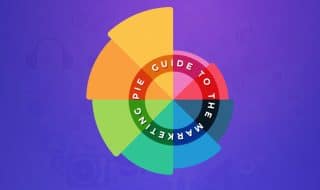





January 29, 2025
Earlier I thought differently, many thanks for the help in this question.
January 29, 2025
You're very welcome!
There's more than one way to write a blog post of course, and it's pretty dependent on the type of content you're writing and your industry. But the structure of blog posts tends to follow a similar pattern and it's never a bad idea to have a strong intro and conclusion to hook the reader and leave them with some parting words.